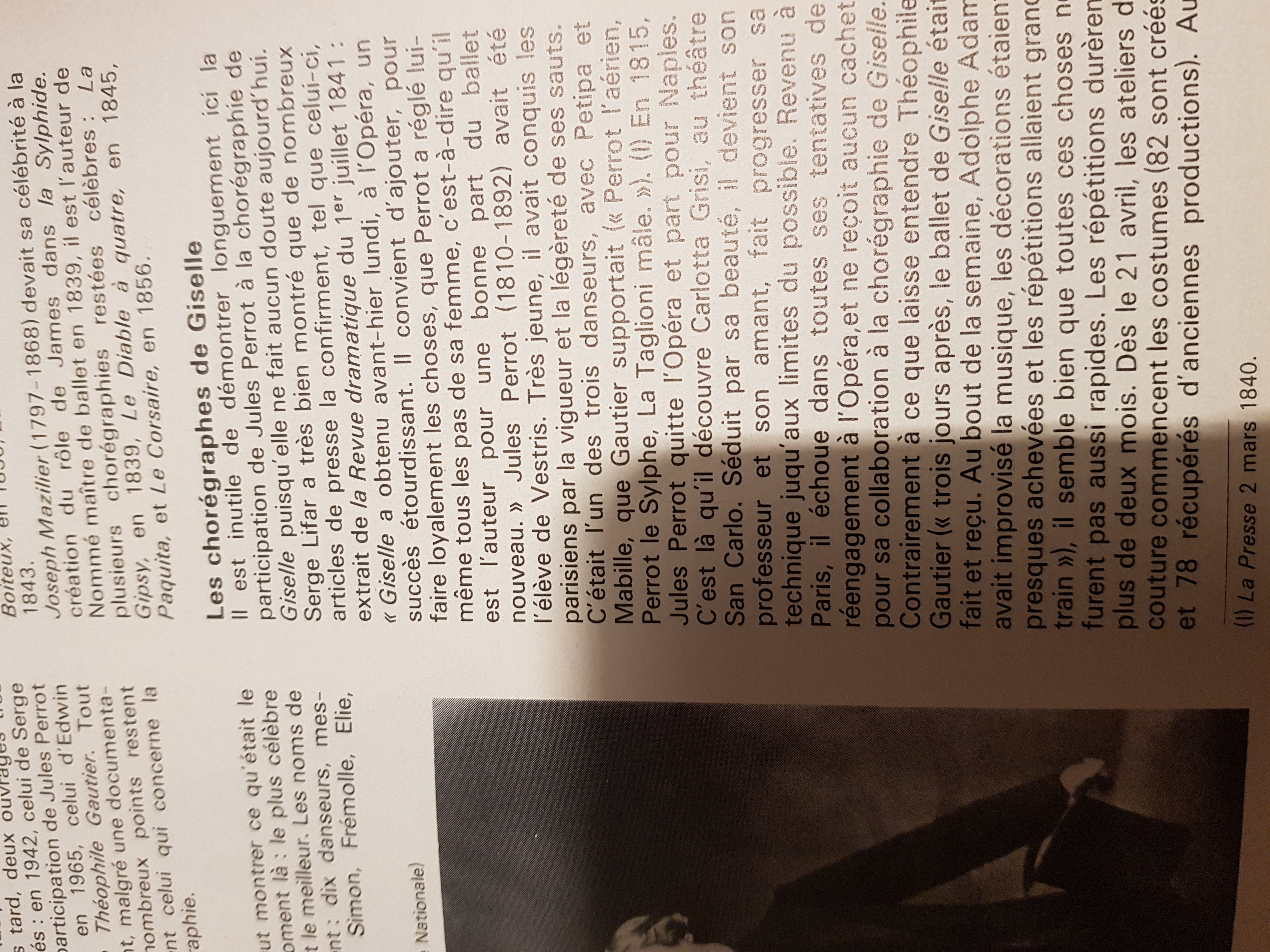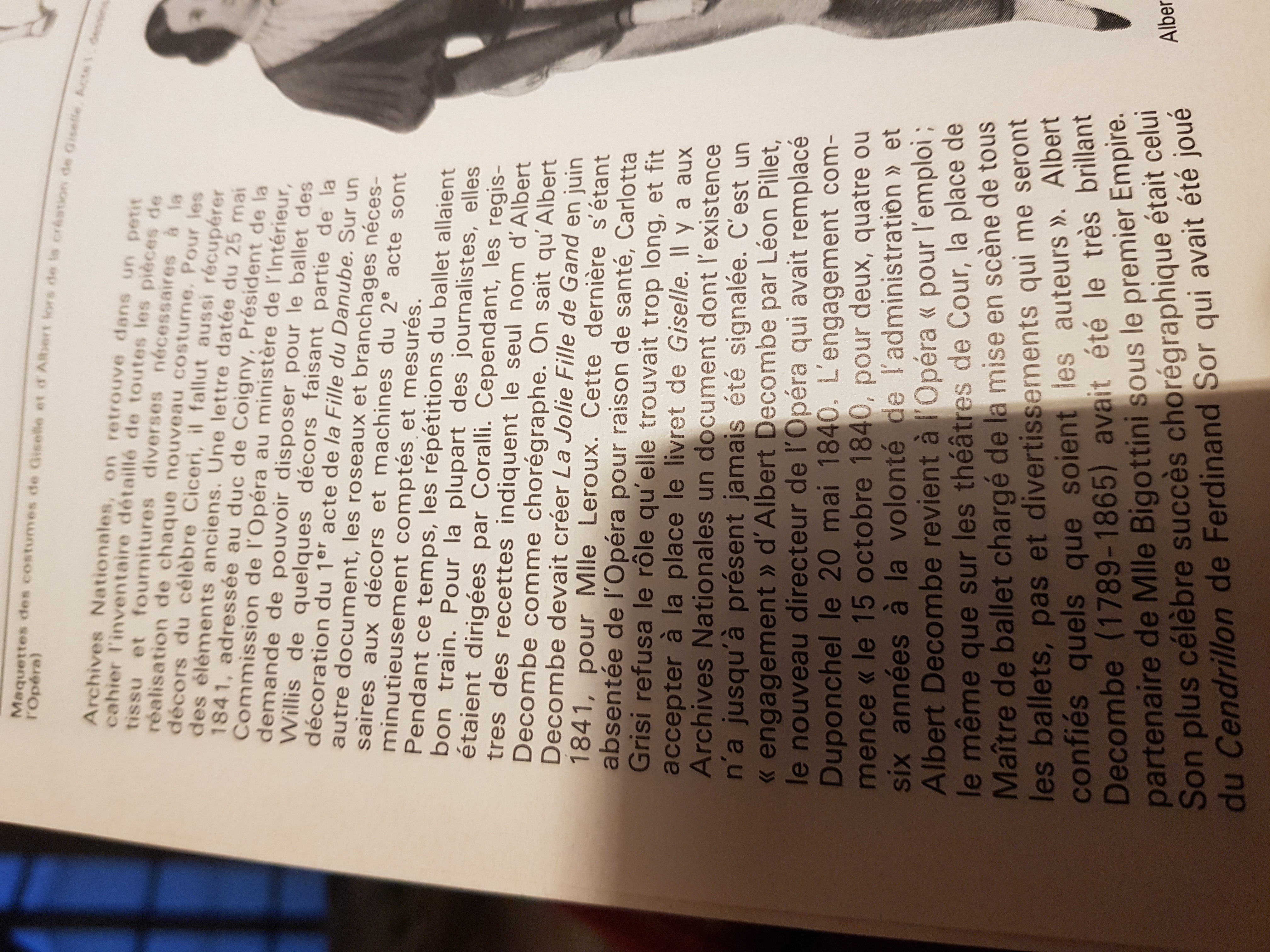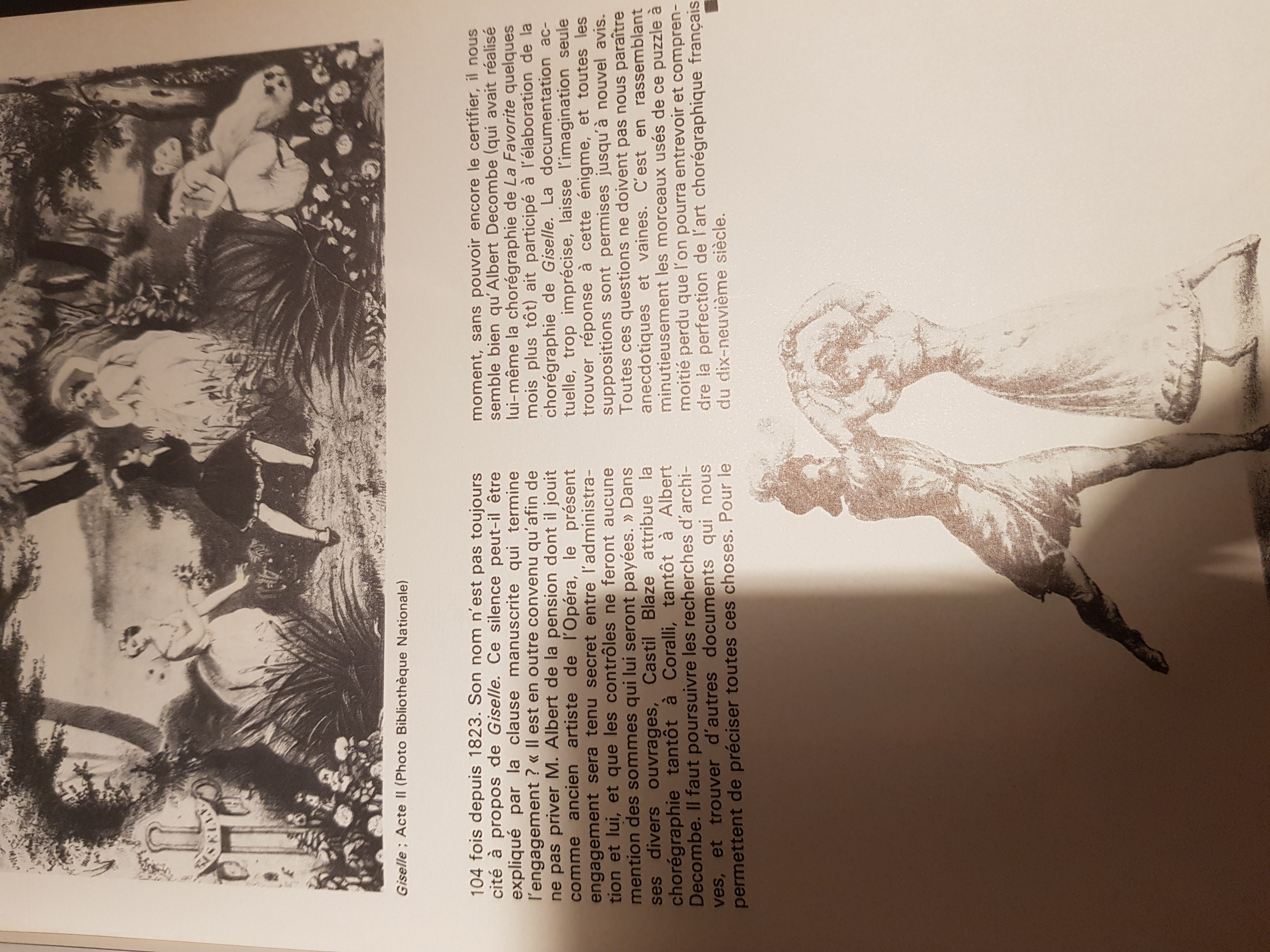Вот ещё что нашлось
https://www.alastairmacaulay.com/all-es … ns-answers
А там - вот!
AM: Did anyone in the nineteenth century spot parallels between Giselle and Faust? The hero of the latter, caught between the devil and heaven, is a deceiver who toys with the affections of a simple girl. The pure and simple girl has another admirer, who doesn’t stand a chance. I especially feel the Faust connection in American Ballet Theatre's production of Giselle, where Hilarion leaves a nosegay on the heroine’s doorstep, which she never notices – something also done in Gounod's 1859 Faust opera by Marguérite’s other admirer Siébel. Gretchen/Marguerite, treated by Faust worse than Giselle is by Albert, goes mad; yet she then saves Faust’s soul by praying for him.
Goethe’s Faust (1790-1832) considerably pre-dates Giselle. By the time of Giselle’s creation, Faust was beginning to be adapted into classical music and popular drama. Ivor Guest’s biography, Jules Perrot, tells us (pp.208-9) that Perrot had danced in 1833 in Deshayes’s Faust in London. (Perrot may have also heard of Bournonville’s Copenhagen Faust (1832) and Salvatore Taglioni’s Naples one (1838). Carlo Blasis had planned one for 1835, but it had never been realized.) Before all these, the Porte Saint-Martin theatre in the 1810s had presented a spoken-theatre Faust in which the great Frédérick Lemaître had made a sensation as Méphistophéles. Guest writes that Perrot would have seen that production in his teens and would have based his 1848 ballet Faust on it, which he first created at La Scala for Fanny Elssler.
MS: It's clear that there are parallels, as you point out. So many artists in the nineteenth century were deeply inspired by the Faust story, and Adolphe Adam had even composed a score for a Faust ballet in London in 1833.
The daisy-petal scene in Faust may have led to the light-hearted one in Giselle. (And I do believe it is a light-hearted scene for the characters in the first act, without portentous overtones. Its deeper meaning should not reveal itself until the second act.)
Here are the lines from Goethe's Faust: “Faust: What do you murmur? /Margaret: . . . Loves me —not—loves me— not (tearing out the last leaf in utter joy:) /He loves me! / Faust: Yes, my child. Let this sweet flower's word/ Be as God's word to you. He loves you.”
I don't know of any specific references to Faust in the nineteenth-century Giselle commentary, though I assume the likenesses between the two works were obvious to many theater-goers. It was typical to have cross-references in those days (just as we do today in film and TV and on Broadway). These sorts of allusions -- to plots, characters, scene types -- can be hard for us to notice because so much of the literature and other theater hits of that period in Paris are unknown to us today. But it was a rich environment in which audiences thrived this sort of thing.
AM: Adolphe Adam not only composed a three-act ballet of Faust for London in 1833, he then (I’ve just discovered) re-used some of its music in the 1841 Giselle. Its choreographer in 1833 was André-Jean-Jacques Deshayes (1777-1846) – who, in 1842, co-choreographed the 1842 London premiere of Giselle with Jules Perrot.
И вот от Бурнонвиля (привет Яковлевой)
"August Bournonville (1805-1829), en route to Naples, spends whole weeks in Paris. He “attended a rehearsal of Giselle, where Théophile Gautier and Balletmaster Coralli shared the idea and the arrangement with the dancer Perrot, whose supposed wife, Carlotta Grisi, performed the title role with a perfection, in choreographic respects, the like of which was not to be found in any other ballerina; but in the area of ‘the poetry of grace’ she was greatly inferior to Marie Taglioni.” (Bournonville, My Theatre Life, p. 533)
Later, Bournonville writes of libretti produced by multiple collaborators: “….as for Giselle, I myself have seen how Perrot taught Carlotta Grisi fragments of the main role of another ballet, while the subject, which was taken from Heine’s Die Wiles, was conceived by Théophile Gautier, arranged and revised by Saint-Georges, and finally mounted or - if one prefers - composed by Balletmaster Coralli.” (My Theatre Life, p. 20) "
А вот что происходило в Петербурге
" 1850
“Perrot took the whole ballet apart and began again when Grisi… arrived in St Petersburg… He had Petipa beside him, since Petipa was technically the producer; and it was Petipa the producer who made certain modifications to the dance of the Wilis in Act Two.” (Money, Pavlova, p.39)
According to Wikipedia, “For Carlotta Grisi's performances as Giselle with the Imperial Ballet in St. Petersburg, Perrot commissioned the composer Cesare Pugni to score a new pas de cinq for the ballerina that was added to the first tableau. [37] This pas was only retained for Grisi's performances and never performed again after her departure from St. Petersburg. "




